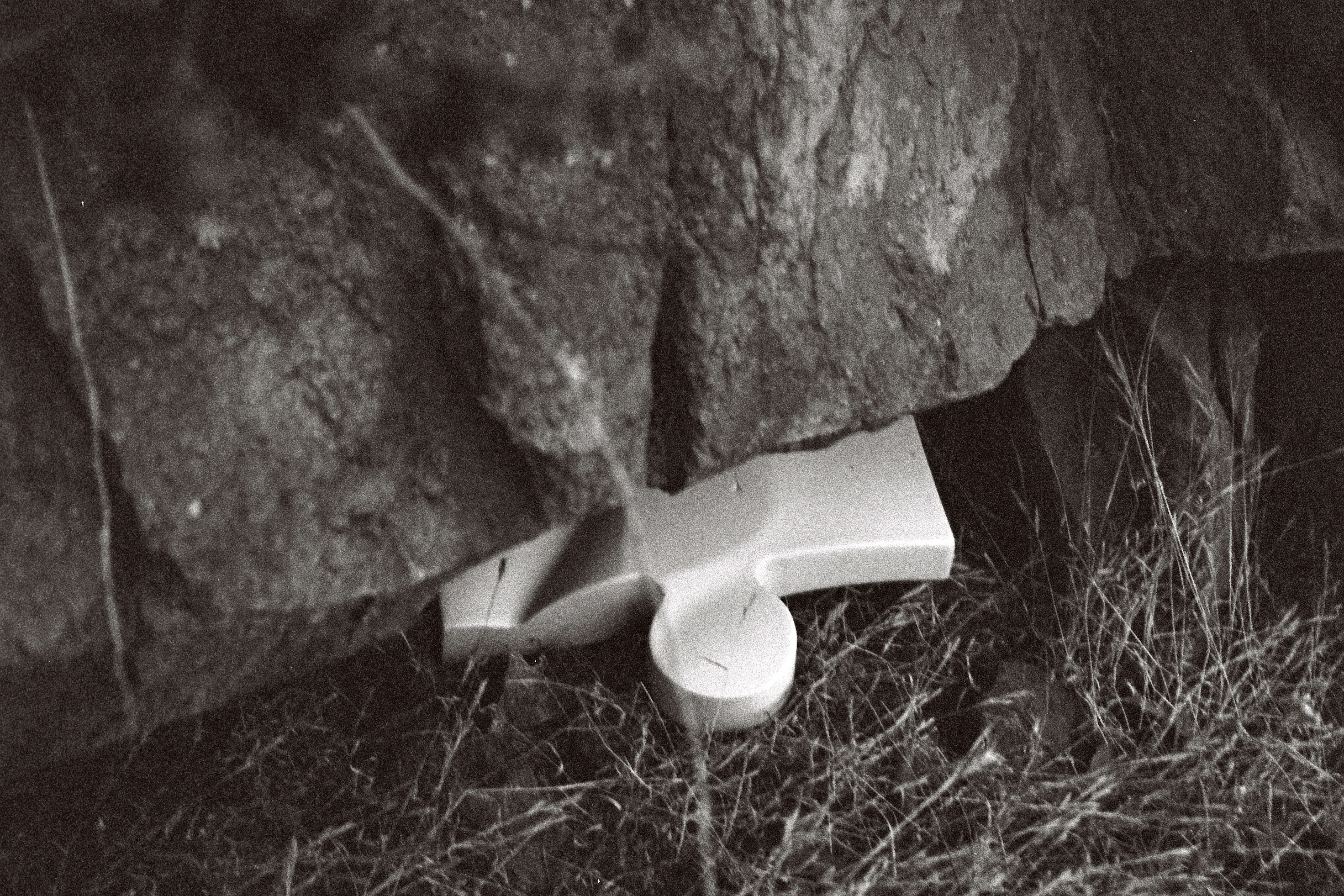SCI-Arc Presents William Virgil: Intentionally Opaque

Art Direction: William Virgil & Majeda Alhinai. Photography: Mo’ Rezk.
SCI-Arc is pleased to announce design faculty, Making+Meaning Coordinator, and Acting Undergraduate Program Co-Chair William Virgil’s upcoming exhibition, Intentionally Opaque. Designed and conceived alongside Brash Collective partner and fellow SCI-Arc alum Majeda Alhinai, Intentionally Opaque is open to the public from July 29 - September 11 in the SCI-Arc Gallery (960 East 3rd Street 90013) with an opening reception on Friday, July 29 at 6pm. Further details are available on the official event page.
Intentionally Opaque presents a large-scale, sculptural labyrinth installation, “a space of otherness simultaneously physical and mental, an analogy for life,” through which visitors can navigate. In the installation, the walls of the labyrinth, formed by individual puzzle pieces slotted together, were digitally sculpted to create highly detailed and precisely crafted curves and ripples to mimic the smooth and sinuous surface of the brain. Each piece was individually CNC milled using a process entailing ‘subtractive manufacturing’ to carefully carve out the forms from a sheet of Precision Board High-Density Urethane (HDU), so no two pieces are alike, comfortably interlocking to assemble the set of walls that comprise the labyrinth.
The decision to subdivide the wall into puzzle pieces was motivated by a desire to create a new kind of ‘building brick’ requiring no other joinery. "We consider this to be the ‘modern renaissance’ when it comes to sculpting,” he details. “Digital tools today allow us to bypass the lengthy and laborious process of what seventeenth century sculptors would have to endure, while maintaining the integrity of detail.”
The analogy and literalness of a labyrinth kept coming up for Virgil through discussions around mental health and self-awareness. “Labyrinths are portals to another world,” he continues. “When we are in our minds, we are in another world. We express this sentiment in our desire to create a body of work that exemplifies 'otherness' in the physical world—walking the labyrinth is symbolic of understanding oneself. Intentionally Opaque is an area where one can retreat to reset. It's a journey that retraces our commitment to us, where the end is the beginning of a new path, and the beginning culminates a journey.”
While formed by oversized, individually unique puzzle pieces, it is not a maze or a puzzle to be solved. “Instead,” says Virgil, “it is a path to meaning to be experienced. The labyrinth places us in a realm to explore imagination, its muted opaque walls give space to those who need it.”
Opened in 2002, the SCI-Arc Gallery provides a space where practitioners, professionals, faculty, students, and the public can learn about and experience provocative architecture. The exhibitions exemplify the intersections among the various communities in which the institution participates: architecture, urban planning, design, and art.
The gallery program allows exhibitors to experiment with new materials, concepts, and fabrication methods, reflecting SCI-Arc’s encouragement of an experimental approach to construction materials and its emphasis on learning through building.
About William Virgil
William Virgil (M.Arch 2 '16) is currently Acting Undergraduate Co-Chair, Making+Meaning Coordinator, and Design Studio and Visual Studies faculty at SCI-Arc, as well as an an artist, educator, Army veteran, and cofounder of Brash Collective and Design Studio. Virgil holds a Master of Architecture from SCI-Arc, a Master of Human Resources, and a Bachelor of Architecture from Florida International University. Virgil has acted as a guest critic at Rensselaer Polytechnic Institute School of Architecture (RPI), Syracuse, and Kent State Universities. Before returning to teach at SCI-Arc, he lectured at RPI.
While studying at SCI-Arc, Virgil both taught as an assistant to Frank Gehry in a studio examining Prisons of the Future and collaborated with Gehry Partners. He has also taught studios and seminars in SCI-Arc's Design of Cities postgraduate program. Virgil's work has been exhibited domestically and internationally at Hauser & Wirth, A+D Museum, LACI LA Kretz Innovation Campus, SCI-Arc Gallery, One Night Stand LA with Familiar Primitives design team, Kent CAED, Armstrong Gallery in Ohio, and Arsenal Gallery in Poland.
About Majeda Alhinai
Majeda Alhinai (M.Arch ’16, MS Design Theory and Pedagogy ’17) is a designer, artist, educator, and the co-founder of Brash Collective; an interdisciplinary design collaborative working at multiple scales and mediums. Her work is an amalgamation of her experience in architecture, art, and design; while incorporating her identity as a product of ‘third culture.’ She has written for Alserkal Arts Foundation and Sekka Magazine, and exhibited at various avenues in the MENA Region, United States and Europe.
In 2017 she was appointed as the first Schidlowski Emerging Faculty Fellow at Kent State CAED, where she taught architecture studios and produced research within a yearlong residency culminating in a gallery show.
Alhinai holds a Bachelor of Architecture from the University of Nottingham (UK) and a Master of Science in Design Theory and Pedagogy as well as a Master of Architecture from SCI-Arc, where she received the Graduate Thesis Award for her study of surface depth and digital fabrication applications. She has worked with architecture and design studios in Austria, Los Angeles, and Oman. Currently, she teaches masterclasses and workshops at design and art institutes globally, while exhibiting and working on her art practice.